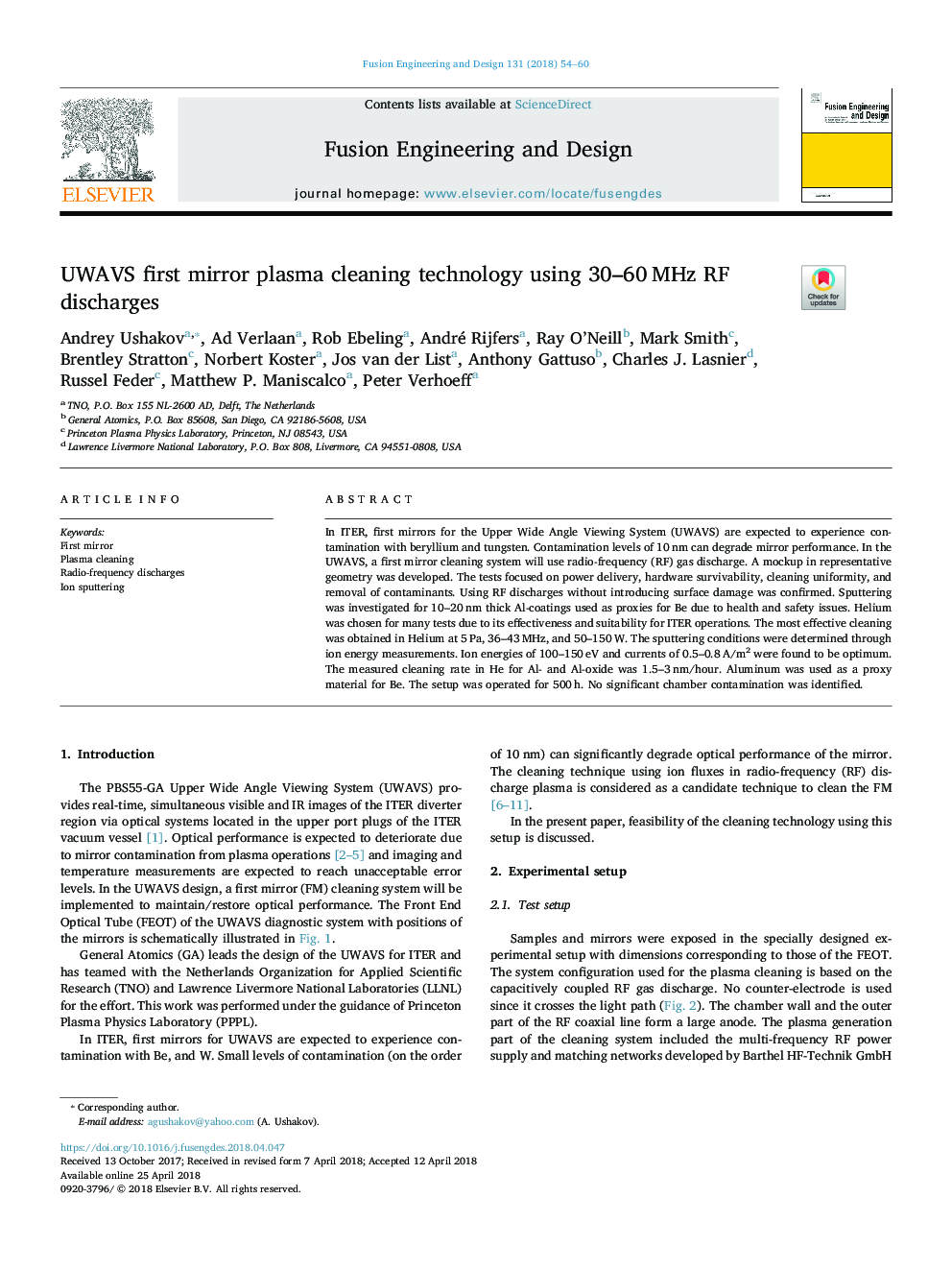| Article ID | Journal | Published Year | Pages | File Type |
|---|---|---|---|---|
| 6742947 | Fusion Engineering and Design | 2018 | 7 Pages |
Abstract
In ITER, first mirrors for the Upper Wide Angle Viewing System (UWAVS) are expected to experience contamination with beryllium and tungsten. Contamination levels of 10â¯nm can degrade mirror performance. In the UWAVS, a first mirror cleaning system will use radio-frequency (RF) gas discharge. A mockup in representative geometry was developed. The tests focused on power delivery, hardware survivability, cleaning uniformity, and removal of contaminants. Using RF discharges without introducing surface damage was confirmed. Sputtering was investigated for 10-20â¯nm thick Al-coatings used as proxies for Be due to health and safety issues. Helium was chosen for many tests due to its effectiveness and suitability for ITER operations. The most effective cleaning was obtained in Helium at 5â¯Pa, 36-43â¯MHz, and 50-150â¯W. The sputtering conditions were determined through ion energy measurements. Ion energies of 100-150â¯eV and currents of 0.5-0.8â¯A/m2 were found to be optimum. The measured cleaning rate in He for Al- and Al-oxide was 1.5-3â¯nm/hour. Aluminum was used as a proxy material for Be. The setup was operated for 500â¯h. No significant chamber contamination was identified.
Related Topics
Physical Sciences and Engineering
Energy
Energy Engineering and Power Technology
Authors
Andrey Ushakov, Ad Verlaan, Rob Ebeling, André Rijfers, Ray O'Neill, Mark Smith, Brentley Stratton, Norbert Koster, Jos van der List, Anthony Gattuso, Charles J. Lasnier, Russel Feder, Matthew P. Maniscalco, Peter Verhoeff,
